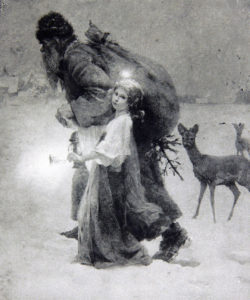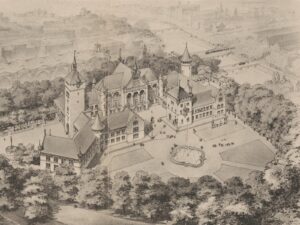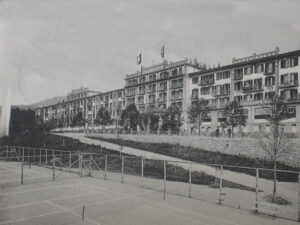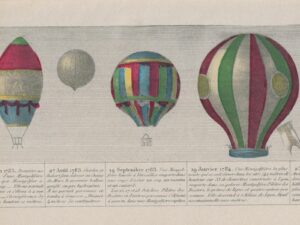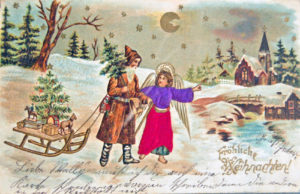
Christkind, or Samichlaus?
On Christmas Eve or Christmas Day, the gifts are handed out! But has it always been that way? 150 years ago, 6 December was always the big day for children.
The way Christmas is celebrated differs from family to family. Christmas is always the same, and very different at the same time. But in german-speaking Switzerland, children agree that on Christmas Eve, 24 December, the Christkind (Christ Child) brings the gifts, and on 6 December Samichlaus, the Swiss Santa Claus, gives out mandarins, nuts and chocolates. A look back shows that in the past, not only was the quantity of gifts smaller, but they were delivered by a different personage as well.
In Switzerland, Christmas has only really been a family celebration since the 19th century. Before that, the festival was purely religious in nature and was part of the ecclesiastical year. After the Second World War the upswing in economic activity, and with it the emergence of a consumer society, resulted in Christmas becoming commercialised. A veritable deluge of gifts started appearing under the lavishly decorated Christmas trees. We’re familiar with the stories our grandparents told, describing how modest – from a 21st century perspective – Christmas gift-giving was barely a century ago. The granddaughter of Anna Spiess-Dettwiler (1849-1934), who grew up in Basel-Landschaft, recounts her grandmother’s memories of Christmas around 1890:
‘Christmas wasn’t celebrated until the actual Christmas Day, but the presents were given out early in the morning. […] The two little girls could barely contain themselves waiting for their grandfather to come back from the barn. Then he would open the little sliding hatch over the stove and lift them up one at a time to look through the opening. Each of them thought she had caught a glimpse of the golden hair or the glittering splendour of the Christkind. […] There were no huge mountains of gifts under the tree, but their joy was surely just as great as today. How excited the children were when they found their doll under the tree with a new little skirt, or even with a new head!’
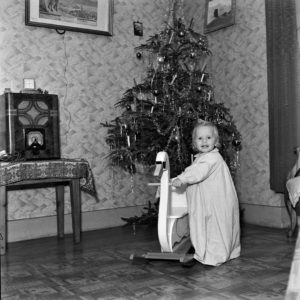
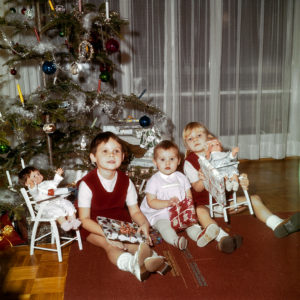
At that point, the bringer of the gifts was the Christkind, the Christ Child. Until the 19th century, however, throughout much of Switzerland people exchanged gifts not on Christmas Eve or Christmas Day but, particularly in Catholic areas, on St Nicholas’ Day, 6 December. In Ticino the giving of gifts took place on Epiphany, 6 January, and in Protestant areas it was usually on New Year’s Day. In line with this, the bringer of the gifts was St Nicholas – Samichlaus in Swiss German. Even today, St Nicholas’ Day is still strongly regional in character, attesting to its historical importance as the day of gift-giving. Samichlaus still gives children mandarins, chocolate and nuts. In some areas, Santa Claus parades (Klausenmärsche) or processions (Treichelumzüge) hark back to the old folk customs.
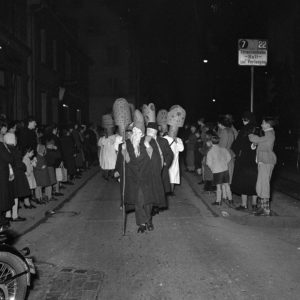

The Reformation in the 16th century rejected the veneration of saints, including St Nicholas. The Protestant reformers replaced Nicholas with the ‘holy Christ’, and moved the giving of gifts to his birthday, 25 December. Over the years, the concept of the Christkind became increasingly dissociated from Jesus Christ himself; as a result, the Christkind evolved into a separate, angelic figure and became established as the bringer of gifts.
But the flexibility of these Christmas traditions is also reflected in the fact that in the 18th to 19th centuries, in some areas St Nicholas later reappeared in the person of the less overtly religious Santa Claus. Especially in Germany, Santa Claus has replaced the Christkind as the bringer of gifts at Christmas. In Catholic areas, on the other hand, the originally Protestant Christkind was favoured, thanks to his angelic appearance, and well into the 20th century was firmly held to be the key figure in the giving of gifts. In Switzerland today, Santa Claus and the Christ Child exist side by side, with Samichlaus distributing gifts on St Nicholas’ Day, and the Christkind doing the honours at Christmas. But the account given by Anna Spiess’ granddaughter shows that the two of them can also work together:
‘Samichlaus wore a black cape with a big hood, and had a big beard. When the children had recited their Versli (traditional Christmas poems and rhymes) and he had told them what they had done well during the year and where they had misbehaved, he emptied his sack: there were slices of dried apple and pear, dried cherries, nuts and a few Guetzli cookies – if it went well, there was even a little chocolate for each child tumbling out onto the floor. Then he went back into the forest. […] If wisps of fog were seen there sometimes, you knew: Aha! Now Samichlaus is helping the Christkind bake the Lebkuchen gingerbread.’
